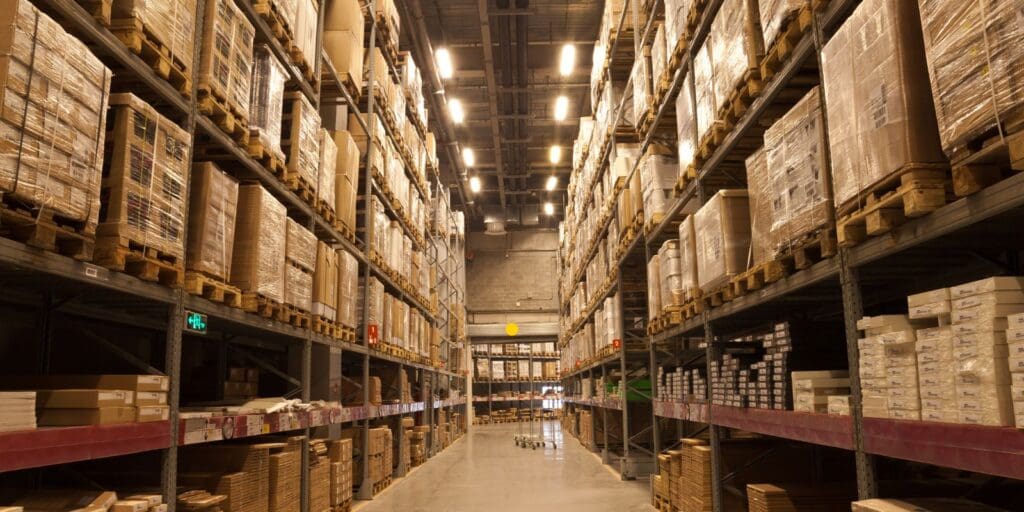Warehouses are the backbone of the UK’s economy and are helping to achieve the Welsh Government’s freight strategy to grow the country’s wealth.
Despite their extreme importance, many of Wale’s warehouses are facing obsolescence by failing to meet vital building standards.
It’s not just warehouse buildings that are falling behind when it comes to standards; many aren’t being run efficiently and aren’t embracing modern technologies and tactics.
Here are some of the many ways that Welsh warehouses could face becoming obsolete and tips for business leaders on how to improve their operations.
Customers Have Higher Expectations Than Ever Before
E-commerce and the rise of fast shipping have raised consumer expectations for quick and reliable order fulfilment. Older warehouses may struggle to meet these demands due to their outdated infrastructure and technology. Whether they work with businesses or ship directly to customers, warehouses and logistics companies need to make sure that they’re meeting the needs of modern consumers. That means upgrading their buildings and strategies, to ensure that they remain competitive and able to cope with the ever-changing logistics landscape.
Technology Isn’t Being Integrated Properly
One of the most significant issues that many warehousing companies face is the lack of focus on technology over recent years. Providers like Indigo offer WMS software that can provide managers with real-time stock data that improves inventory accuracy. Making the most of tools like these can help warehouse leaders to improve efficiency, but the logistics landscape can often be slow to take up new tech. Managers in warehouses need to focus on onboarding new tools over the coming months to ensure that they remain competitive.
Sustainability Has Also Been Overlooked
Another area that older warehouses may not have stayed up to date with is sustainability. With the growing focus on sustainability and eco-friendly practices, older warehouses may find it challenging to retrofit or upgrade to meet these standards. Businesses that prioritise sustainability may choose to invest in more modern, environmentally friendly facilities that use reclaimed or recycled materials, or integrate eco-friendly power sources such as solar panels. Also, older properties often have poor insulation and outdated heating, cooling, and lighting systems. This results in higher operational costs and a larger carbon footprint, which is increasingly unacceptable in today’s environmentally conscious business landscape. Switching to energy-efficient, eco-friendly solutions can save money as well as reduce a warehouse’s impact on the planet, but they require a large initial investment, which can be daunting to many commercial property owners or managers.
Transport And Accessibility Need Upgrading Regularly
Many older warehouses were built in areas where transportation infrastructure has not kept pace with modern logistics requirements. They might be located far from major highways, ports, or railways, making it challenging to efficiently move goods in and out of the facility. This can result in longer lead times, increased transportation costs, and reduced competitiveness compared to newer warehouses situated in strategically advantageous locations. Transportation systems get upgraded and change regularly, but it can be hard for some businesses in the logistics market to stay on top of these developments. Modern supply chain requirements demand proximity to major transportation hubs, highways, and ports, which older facilities might lack. By being close to transportation solutions, logistics businesses can speed up delivery times and meet the needs of today’s customers, who expect fast turnaround times. Also, some warehouses might have narrow streets or outdated loading areas that are not designed to accommodate large trucks and trailers commonly used in modern shipping. This can lead to congestion, delays, and even damage to property and goods when manoeuvring these vehicles in and out of the facility.
Commercial Property Revaluations Could Cause Financing Issues
Recent revaluations of commercial properties could seriously affect the value of warehouses and logistics centres throughout Wales. These new valuations could affect everything from commercial mortgages and business rates to insurance premiums, which could mean that organisations need to review their finances and might face rising costs. With the economic climate currently highly volatile, thanks to rising interest rates, companies might struggle to cope with increased costs. As such, leaders need to use techniques such as streamlining their operations with technology and reducing staff numbers to combat the ever-rising prices they face.
A Short Summary
To remain competitive and relevant, owners of older Welsh warehousing spaces may need to consider extensive renovations, upgrades, or even relocation to more suitable locations. Adaptation to modern logistics and warehousing practices is crucial to avoid becoming obsolete in the ever-evolving world of commerce and industry. When looking to upgrade warehousing spaces and practices, leaders need to consider their return on investment. In some cases, the costs associated with maintaining and upgrading older warehouses may outweigh the benefits. Businesses may find it more cost-effective to relocate or invest in newer facilities rather than trying to make their existing spaces work. Whatever the choice, it’s clear that Welsh warehousing and logistics providers need to work to improve their operations to stay competitive in 2023 and beyond.

